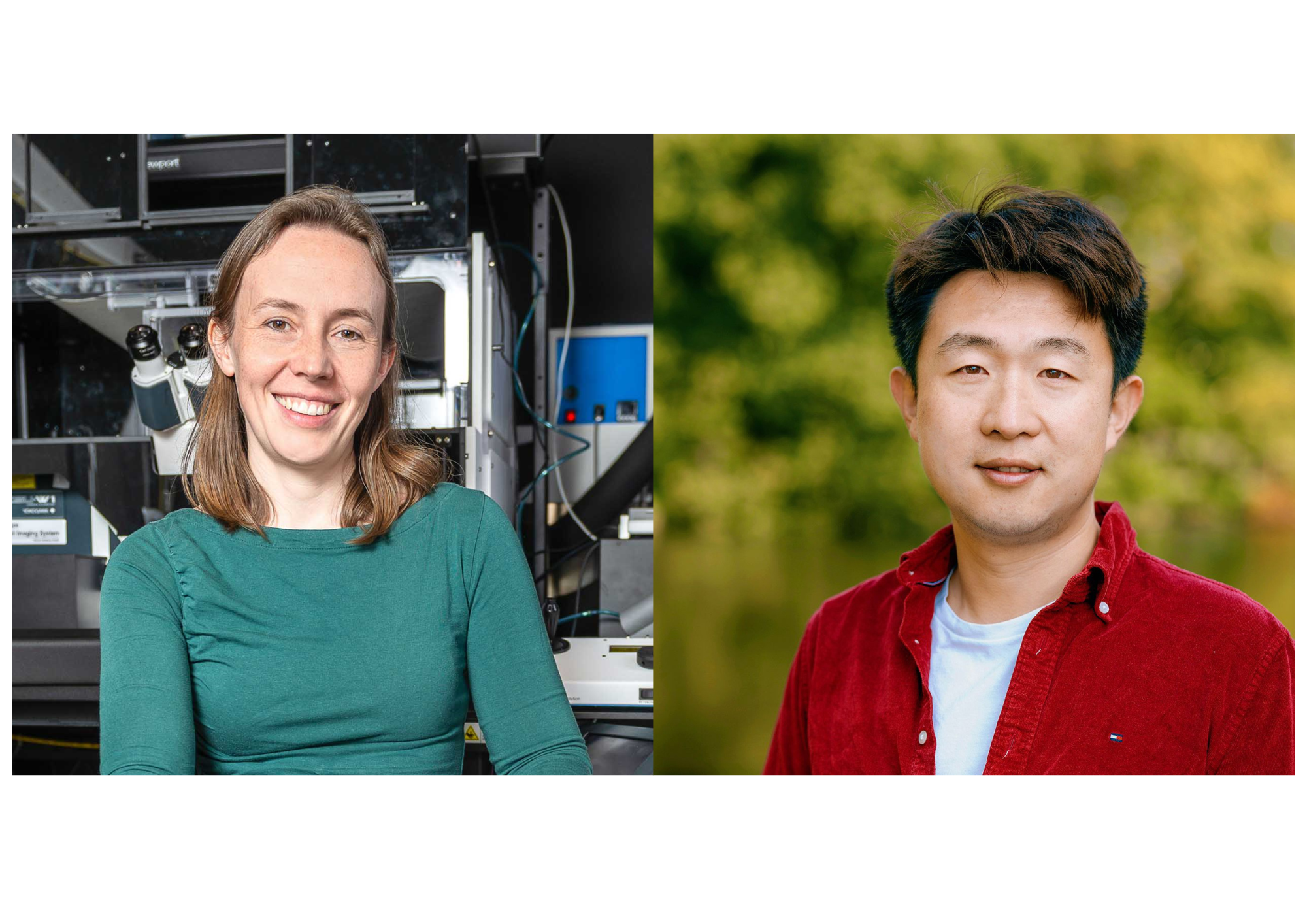Two DANDRITE Group Leaders among the ERC starting grants recipients 2025
Fiona Müllner and Chao Sun have secured ERC Starting Grants to investigate how the brain edits our vision and how its cleaning system functions, particularly during sleep. With these two grants, DANDRITE now has five out of ten group leaders listed as ERC grantees.

How does the brain shape what we see?
New DANDRITE Group Leader Fiona Müllner has recently secured an ERC Starting Grant to address this question. Her research will explore how the thalamus—a deep brain region necessary for conscious perception—actively shapes and modulates visual signals.
When light hits the eyes, signals rush to the brain. But before they reach the visual cortex, they pass through the thalamus, specifically the dorsal lateral geniculate nucleus (dLGN). This area does not just relay information like a cable wire. Instead, we can picture it as an editor who determines which information is released, highlights important details, mutes distractions, and adjusts the information stream depending on attention, arousal, and behaviour.
“Despite its central location in the visual pathway, the role of the thalamus in shaping visual perception is too little understood”, the project leader explains. “We do not only seek to understand how the thalamus shapes vision, but also to understand the circuit mechanisms behind it.”
The project, named ActiVisTha, will investigate three key questions. First, how do diverse signals from the retina—our internal camera system—get transformed into the brain’s visual features? Second, how do local interneurons, sparse but powerful brain cells, shape and refine these visual streams? And third, how do inputs from other brain regions—bringing in information about attention, arousal or behavioral context—change the way the thalamus edits visual information?
To answer these, the ActiVisTha team will use cutting-edge tools to map circuits in the mouse brain with unprecedented resolution, suited to empower a novel view of how visual processing takes place. Their goal: to create detailed models of how thalamic circuits shape vision.
“We want to uncover missing links between input and output diversity of the brain’s early visual system”, says the researcher. “These could refine or even redefine our understanding of the thalamus.” The potential impact extends far beyond basic neuroscience. By understanding the circuits that underlie visual processing, the project could inform the design of advanced visual prostheses for the blind and inspire new approaches in machine learning.
In short, ActiVisTha is not just asking how we see, but how the brain shapes what we see.
Why does sleep matter so much for brain health?
DANDRITE Group Leader Chao Sun will use his ERC Starting Grant to find out. His project aims to uncover how the brain’s cleaning system works, especially during sleep—a process that clears away damaged proteins and protects nerve cells from injury, inflammation, and disease.
Like any hardworking system, the brain produces waste. Much of this waste consists of damaged proteins, which build up as nerve cells communicate with one another. If not removed, these proteins can accumulate, disrupt cell communication, and, in the worst cases, trigger serious neurological diseases.
“It is widely thought that sleep plays a crucial role in the brain’s ability to clean itself,” says Chao Sun. “But we still lack a key piece of the puzzle: we don’t know exactly which synaptic proteins are damaged, or how the brain identifies and removes them.”
To tackle this, Chao and his team have developed an innovative method to study synapses—the junctions where brain cells meet and communicate—at the molecular level. This allows them to map brain activity with unprecedented detail.
“If the project succeeds, we will gain groundbreaking insights into how the brain cleans itself during sleep,” Chao explains. “That knowledge could both explain sleep’s life-sustaining function and open the door to new treatment strategies for brain disorders.”
50% of Group Leaders Hold ERC Starting Grants
The achievement is also a milestone for DANDRITE. Director Poul Henning Jensen highlights that half of the centre’s group leaders have now won ERC Starting Grants—a remarkable accomplishment in international research.
“This is testimony to the exciting research programs of Chao and Fiona, and to the outstanding level of our group leaders,” says DANDRITE Director Poul Henning Jensen. “With five ERC Starting Grants among ten leaders from our first two cohorts, DANDRITE has achieved an exceptional success rate for a research centre.”
In addition to Chao Sun and Fiona, other ERC Starting Grant recipients at DANDRITE include Taro Kitazawa, Sadegh Nabavi, and Keisuke Yonehara.
The Starting Grant provides up to €1.5 million in funding for their projects.
